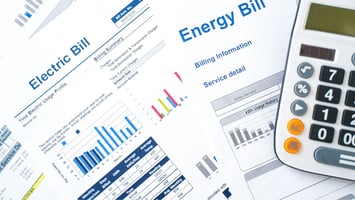For SME manufacturers in the UK, energy costs aren’t just about the price of gas or...
How-to: Measure, manage, and reduce water use

Water is an essential resource in industrial operations, as critical as any raw material. Its value and scarcity demand careful management. This guide outlines a systematic approach to measuring, managing, and reducing water use across your organisation, turning conservation into a strategic advantage.
Stage 1: Understanding Your Water Use
Metering: Begin by installing water meters throughout your facility to establish a baseline for water usage. Use strategic placement—such as on the main supply line, production lines, and cooling systems—to gather comprehensive data. For a deeper analysis, implement sub-metering to track specific departments or processes. Smart meters offer real-time monitoring, leak detection, and advanced analytics, making them a valuable tool for managing water use.
Analyse the collected data to identify patterns, inefficiencies, and opportunities for conservation. Establish benchmarks based on historical usage and set realistic reduction targets. Use this data to inform decision-making, creating feedback loops that refine your water management strategy over time.
Water Audits: Conduct a thorough water audit to identify inefficiencies in your operation. Assemble a cross-functional team to ensure all aspects of water use are considered, and use metering data, facility maps, and site walkthroughs to create a detailed picture of water flows. Pay special attention to high-consumption processes, leaks, and water-intensive activities. Prioritise conservation measures based on audit findings, from quick fixes like repairing leaks to long-term investments in efficient technologies.
Stage 2: Setting Objectives for Water Conservation
Use insights from your audit to set clear and achievable water conservation goals. Treat water as a critical input by including it in your bill of materials, elevating its importance across your organisation. This recalibration fosters a culture of awareness and responsibility.
Stage 3: Technology and Operations
Water-Saving Equipment: Modernise your operations with water-efficient technologies. Begin by cataloguing all water-utilising equipment and assessing their efficiency. Identify outdated or inefficient systems and prioritise upgrades that promise significant water savings. Conduct a cost-benefit analysis to weigh investment costs against expected savings, and ensure minimal disruption to operations during implementation.
Recycling and Reuse: Treat and recycle process wastewater for secondary uses, such as cooling, to reduce freshwater demand. Implement rainwater harvesting systems for non-potable applications like irrigation or cleaning.
Stage 4: Implementing Smart Water Management Technologies
Adopt advanced technologies like AI and IoT to enable real-time monitoring and optimisation of water use. These tools can automate conservation measures, predict usage patterns, and swiftly detect leaks, making your water management strategy both dynamic and efficient.
Stage 5: Building a Water-Conservation Culture
Foster a company-wide culture of water conservation through training and continuous learning opportunities. Empower employees to identify inefficiencies and contribute ideas for water-saving initiatives. Recognise and reward teams or individuals who excel in conservation efforts to reinforce the importance of these practices.
Stage 6: Scale
Evaluate the impact of your water management measures regularly. Successful strategies should be scaled and adapted for use in other areas of your operations or across multiple facilities. Continuous improvement ensures your approach evolves with changing conditions and technological advancements.
By following this structured approach, your organisation can transform water management from a necessary operational task into a cornerstone of sustainability and efficiency. These practices not only reduce costs but also demonstrate leadership in resource conservation, earning trust from stakeholders and positioning your business for long-term success.

.png?width=50&name=Untitled%20design%20(26).png)


